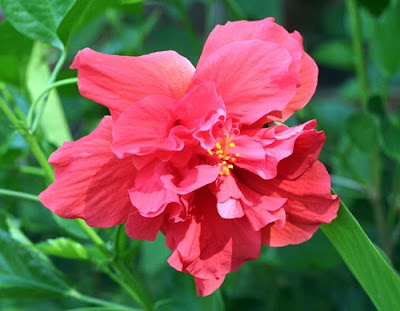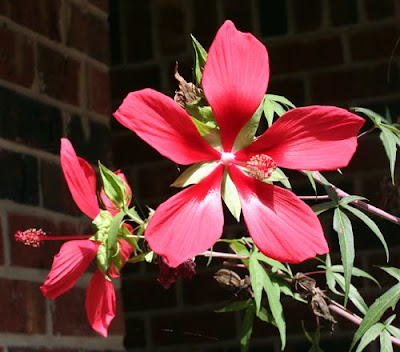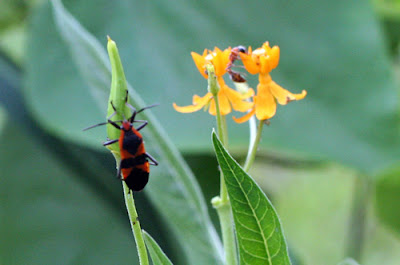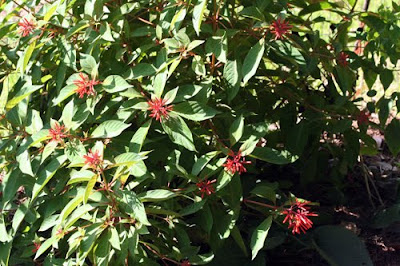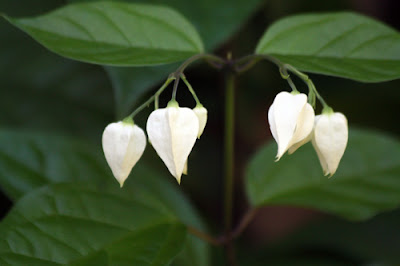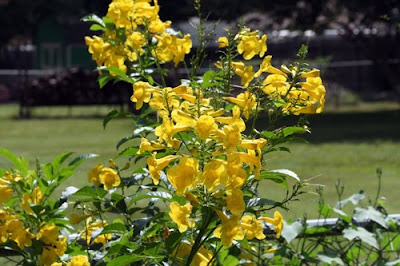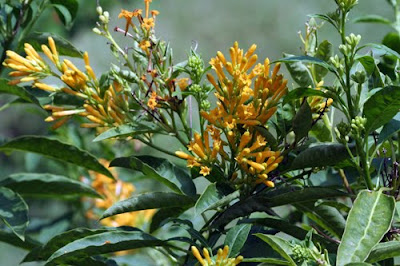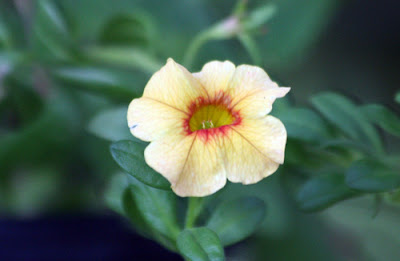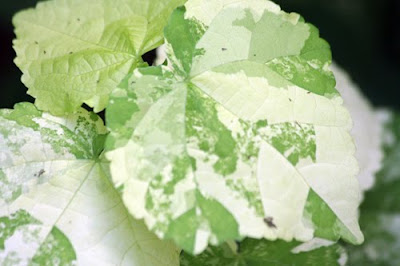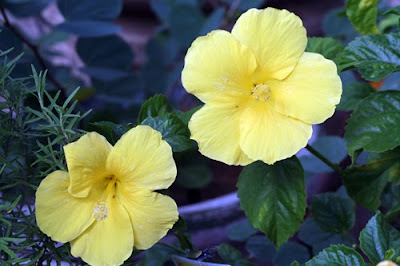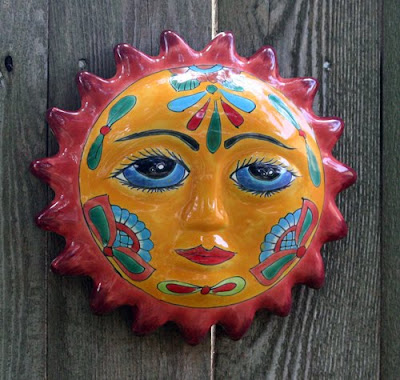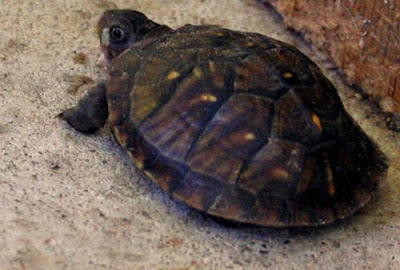In the middle of my daily online reading recently, I came across this title
,"Top 10 Rookie Gardening Mistakes (and How to Avoid Them)" by Colleen Vanderlinden. Well, of course, I had to read that!
As I started reading Ms. Vanderlinden's list, I thought, "This woman must have been looking over my shoulder!" By the time I finished the list, I knew for sure that she had written the unauthorized and unexpurgated biography of my life as a gardener. Yes, she told all my dirty little secrets.
The dirtiest of my secrets though is that these aren't just rookie mistakes with me. I keep making them over and over again.
Some rookies in that other game that I love, baseball, just never learn that they can't hit that low and outside slider. They'll keep right on swinging at it until they are finally sent back to the minor leagues for "seasoning." In gardening, there are no general managers to send me down to the minors, but Mother Nature certainly tells me,
"You're out!" often enough. But you, gentle reader, are better than that. You don't have to make these mistakes that I seem doomed to repeat. Here's how to avoid them.
1. Clueless watering: I've drowned so many plants in my life as a gardener that I really should probably be declared a mass murderer. On the other hand, I've let many die of thirst, although not as many, I think, as I've drowned. Over/underwatering is so easy to avoid that there really is no excuse for doing it. First of all, we should make the effort to know our plant's requirements, whether it likes to dry out between waterings or stay consistently moist or have its feet wet, and secondly, what could be easier than sticking a finger in the soil to see if it is wet? If it is dry, then it is probably time to water.
2. Wrong plant, wrong place: Mea culpa! I confess! Oh, how many times have I done this in my gardening career? Planted a shade-loving plant in the sun or a plant that requires full sun in the shade of an oak tree. Stuck a plant that needs a protected southern exposure on the north side of the house or a plant that needs only gentle morning light where it will get the full brunt of the harsh afternoon sun. Yes, I have done it not once but many times. And all it would require to avoid this mistake is reading the plant tag, or, if there is no tag, doing a little research to find out what the plant needs to thrive. Successful gardeners know that the most important thing you can do for a plant is to give it the conditions that it likes and not try to force it into a situation where it is uncomfortable. Stressed plants will not perform well for you. Happy plants will.
3. Not giving plants enough space: You've got this big, empty bed to fill and you're looking at some dinky little quart or gallon plants and thinking to yourself that your space is going to look very bare. And so you buy more plants and you shove them all in close together. But plants grow! And some of them grow very large and very fast. Once again, look at the plant label and believe what it says about how much space the plant requires. Give it the room that it needs and then be patient. Truthfully, patience is probably the last lesson that any gardener learns. And the hardest.
4. Not knowing your zone: It is important to know your USDA Hardiness Zone and to believe what the charts tell you about temperature ranges of that zone. Many area gardeners who had disregarded that information in their planting had some very sad experiences last winter, when, for the first time in a long time, we actually
had a winter. Read the plant label and compare it to your known hardiness zone and if it says the plant can only survive in zone 9 or higher, don't plant it if you are in zone 8.
5. Haphazard fertilizing: Some of us have this crazy idea that if a little is good then a lot must be better. Not true - especially when it comes to fertilizers. You can overdo it even with organic fertilizers, and giving the plant more than it needs is not unlike giving a child more food than it needs. You may end up with an obese and unhealthy child or a stressed and unhealthy plant. And stressed plants send out signals that are easily interpreted by insects looking for a meal. They say, "Come and eat me!" and the munchers will not need a second invitation.
6. Not mulching: Ah, mulch, how do I love thee? Let me count the ways. You discourage weeds and keep the root zone cooler. You reduce evaporation and add nutrients to the soil. Few things are more important to plants in our climate than a good organic mulch of leaves or grass clippings or wood chips. (I like the native cedar mulch myself.) And besides all the good things it does for our plants, it makes the beds look neater and more attractive.
7. Indifferent soil preparation: It all begins with the soil, no matter what you are growing. One of the smartest things you can do is to contact your County Extension Office for a soil test kit. Follow the directions, collect your soil and send it in for analysis. Soon you will know if your soil is deficient in some nutrients and you can make the necessary amendments. Before you plant, you'll want to thoroughly loosen the soil and add plenty of organic material such as compost or well-rotted manure. This is where your plant's roots will be growing and roots make the plant. But soil makes the roots.
8. Sun/shade fairy tales: This relates back to #2. Don't stick a plant that needs sun in the shade or a plant that needs shade in the sun. You'll only stress the plant and make it more prone to disease, as well as easy prey for insect pests.
9. Not knowing your site: Even in a small backyard garden, there are microclimates and special circumstances that require consideration when you are planning what and where to plant. You may have a spot that collects water when it rains. You wouldn't want to put your xeric plants there. Or you may have a location that is particularly exposed to wind. You shouldn't plant something with tender, easily bruised leaves in such a spot. Knowing the eccentricities of your site and planning and planting accordingly can save you a lot of annoyance and frustration and can save a lot of innocent plants' lives.
10. Listening to "experts": This may seem counterintuitive, but no one can know your garden as well as you do. You are the one who lives there, the one who puts your hands in the soil, the one who watches the shadows move across the yard each day, the one who sees where the rain collects and how it flows through your yard. There are many "experts" out there and they have a lot of valuable information and advice to give. But take it all with a grain of salt. They don't know your yard like you do. In your garden, YOU are the expert.
Now you know all the terrible, horrible, awful, no-good mistakes that I made as a rookie gardener - and every year since. You can avoid them and be a successful gardener. What it really takes, chiefly, is common sense (which, in fact, is not very common) and reading the plant labels.
Happy gardening!



